Long-Term Researchers
Researchers listing
The Biogeoscience Institute hosts researchers from institutions around the world, conducting research across many disciplines.
Click to view profiles of our long-term researchers, listed by subject matter area:
Animal Ecology and Wildlife Conservation Biology | Ecohydrology, Meteorology, and Watersheds | Vegetation Dynamics and Forestry | Ecosystem Sustainability and Environmental Economics | Human, Domestic Animal, and Wildlife Disease Interactions | (New) Space Physics
Animal Ecology and Wildlife Conservation Biology
F. Stephen Dobson
Dr. Stephen Dobson’s research focuses on behavioural and population ecology, population genetics, evolutionary ecology, and conservation biology of mammals. His major field work is on ground-dwelling squirrels in alpine environments in Western Canada. Most recently, he is studying how individual fitness of Columbian ground squirrels changes with the changing climate of the mountain environment. He also collaborates on international cooperative research programs with colleagues in Europe, including a study of the mating system of King Penguins. He and his graduate students share a common curiosity about behaviour, ecology, evolution, genetics, and conservation of birds and mammals.
Nico Eisenhauer, PhD
Professor and Head of Experimental Interaction Ecology
German Centre for Integrative Biodiversity Research (iDiv)
Halle-Jena-Leipzig, Leipzig University
Email: nico.eisenhauer@idiv.de


Dr. Eisenhauer is the Head of Experimental Interaction Ecology at the German Centre for Integrative Biodiversity Research (iDiv). The project EcoWorm investigates “Ecosystem responses to exotic earthworm invasion in Northern American forests”. Using a synthetic combination of field observations, field experiments, lab experiments, and meta-analyses, the work in the framework of the EcoWorm project will be the first systematic examination of earthworm effects on relationships between plant communities, soil food webs, and ecosystem processes. Further, the effects of a changing climate on the spread and consequences of earthworm invasion will be investigated. Meta-analyses will be used to test if earthworms cause invasion waves, invasion meltdowns, habitat homogenization, and ecosystem state shifts. Global data will be synthesized to test if the relative magnitude of effects differ from place to place depending on the functional dissimilarity between native soil fauna and exotic earthworms. Moving from a local to global scale, the present proposal examines the influence of earthworm invasions on biodiversity-ecosystem functioning relationships from an aboveground-belowground perspective.
Kevin Judge, PhD
Measuring selection in nature is a major focus of evolutionary biology, however collecting accurate measures of individual fitness is often time-consuming and costly. One possible solution to this problem is to work with study systems where an individual’s fitness is recorded on their body. Such is the case for many insect species in which the female feeds on parts of the male’s body during copulation, thus recording male mating success as damage to non-regenerating structures. Hump-winged grigs (Orthoptera, Prophalangopsidae, Cyphoderris spp.) are large flightless insects that are distributed widely in the mountainous northwest of North America, including in Kananaskis, AB. Female grigs feed on male hindwings during copulation, and although the damage to males is not fatal, it is permanent. Previous work has suggested that females acquire a nutritional benefit by feeding on male hindwings. My students and collaborators and I are examining a number of interrelated questions regarding the operation of sexual selection on male grigs in the wild, the geographic distribution of the three known species, as well as mechanisms of species isolation. The Barrier Lake Field Station and surrounding area hosts a thriving population of Cyphoderris monstrosa that has been and continues to be a major study site for our research.
Nusha Keyghobadi, PhD
Research in Dr. Keyghobadi’s lab focuses on understanding the factors that determine genetic diversity within and among populations, and the consequences of that diversity for persistence and adaptation. Her work at BGI examines how genetic diversity changes over space and time in a network of interconnected populations of the Rocky Mountain apollo butterfly.
Jeffery Lane, PhD
Dr. Lane’s research group is interested in the causes and evolutionary consequences of life history variation in a hibernating mammal: the Columbian ground squirrel. Specific projects include: the quantitative genetics and plasticity of hibernation phenology; energetic costs of lactation; variation in, and selection on juvenile growth rates; and the influence of climate change on population viability. We attempt to answer these questions using a range of methodologies from multiple disciplines (primarily physiological, evolutionary ecology and quantitative genetics).
Stephen F. Matter, PhD
Associate Professor
Department of Biological Sciences
University of Cincinnati
Email: stephen.matter@uc.edu
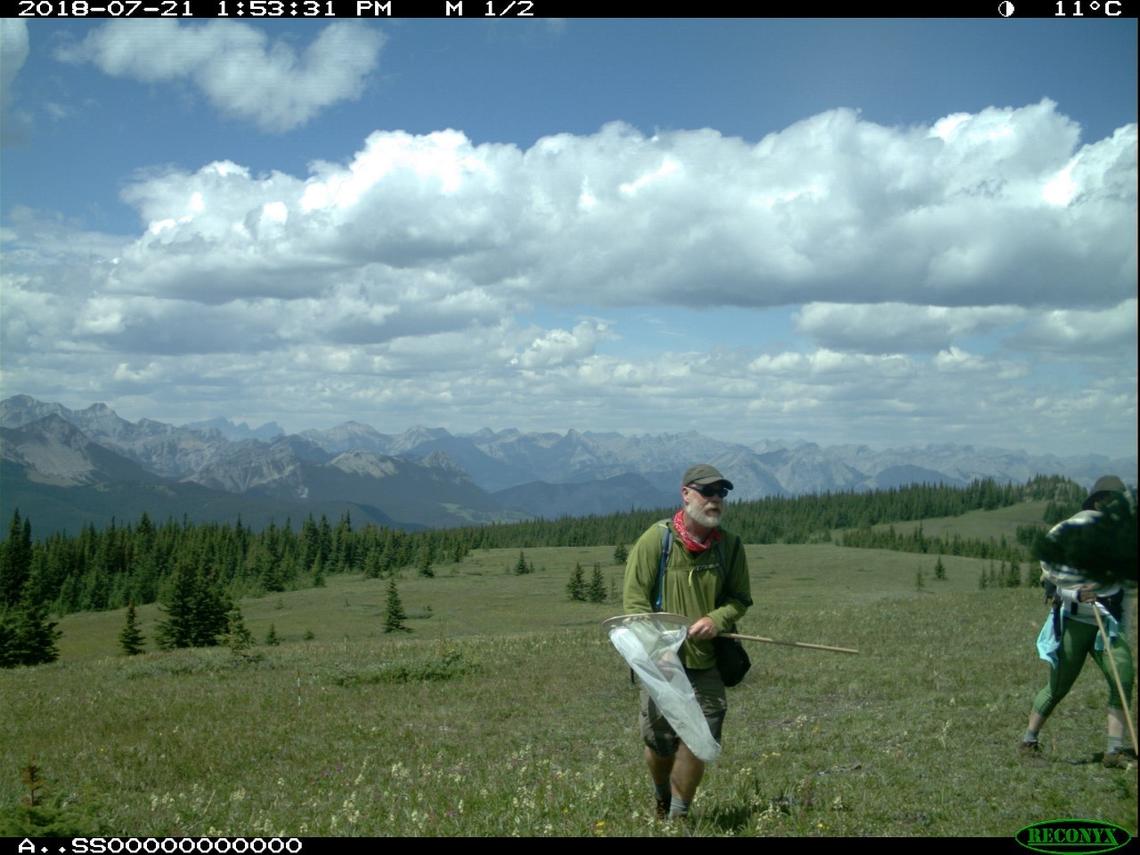

Dr. Matter’s research focuses on the spatial and temporal population dynamics and landscape genetics of several alpine butterfly species and their host plants. Dr. Matter’s research group primarily focuses on the Rocky Mountain Apollo Butterfly, Parnussius smintheus and its host plant Sedum lanceolatum. Their group is pursuing several projects ranging from basic questions involving the role of dispersal for spatially structured population dynamics and synchrony and the effects of local population extinction to more applied questions concerning the effects of rising treeline and climate change for alpine species and their conservation. They are also interested in co-evolutionary questions regarding how plants defend themselves from insect herbivory and how their defenses affect herbivores and their population dynamics. Their approach to research is integrative and included theoretical, experimental and empirical approaches.
John S. Millar, PhD

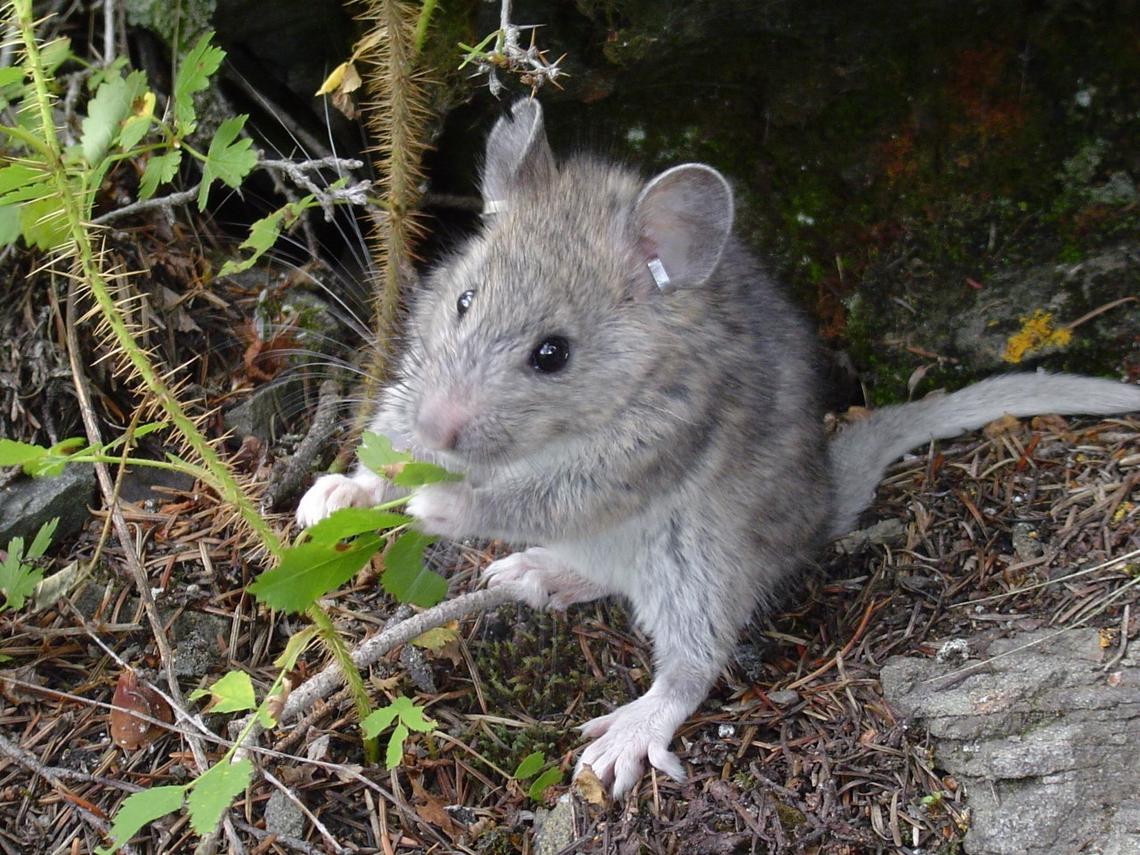
Dr. John Millar’s research is focused on the life history adaptations of mammals to seasonal environments, with a special interest in the life histories of small mammals in northern environments. His research group has studied small mammals in a wide range of geographic locations, including Mexico, California, and the Northwest Territories. However, much of his work has been conducted in the Kananaskis Valley of Southwestern Alberta where the breeding seasons of most small mammals are very short. His research group has conducted long-term studies of patterns of reproduction and survival, as well as targeted studies on behaviour, genetics, and energetics. Species that have been targeted for intensive study include deer mice, red-backed voles, wood rats, and chipmunks.
Long-term data from Dr. Millar’s research can be obtained from the Biogeoscience Institute by request at bgi@ucalgary.ca.
Peter Neuhaus, PhD
Adjunct Professor
Department of Biological Sciences
University of Calgary
Email: pneuhaus@ucalgary.ca
Dr. Peter Neuhaus has been working on different topics in the fields of behavioural ecology, population biology, evolutionary ecology, and social behaviour. One of his main foci in the last years has been on life-history decisions and trade-offs involved with the costs of reproduction in Columbian ground squirrels (Urocitellus columbianus). He has also been looking at parasite host interactions and their impacts on reproduction and survival. Further, he also works collaboratively with Kathreen Ruckstuhl on the evolution of sociality and sexual segregation in vertebrates. Finally in collaboration with Kathreen Ruckstuhl and Nigel Caulkett research on improving anesthesia in wildlife. For the ground squirrel studies he uses an experimental approach as much as possible, something that is rarely done with wild living mammals. The study of sexual differences in sociality of vertebrates uses a more comparative approach.
Jens Roland, PhD
Professor Emeritus
Department of Biological Sciences
University of Alberta
Email: jroland@ualberta.ca
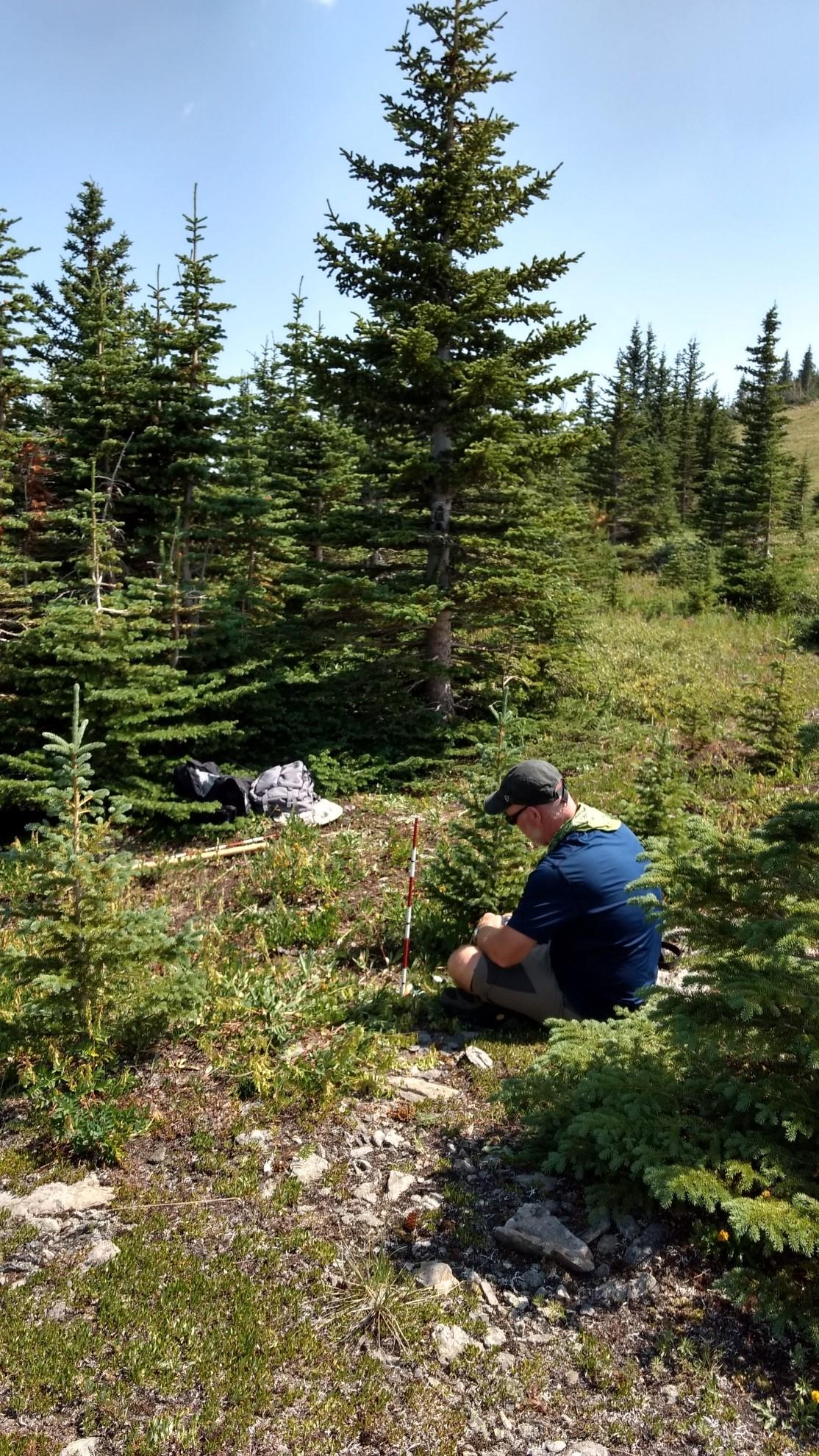

Research in Dr. Jens Roland’s lab focuses on population ecology and dynamics of insects in a spatial or landscape perspective. Projects examine both the large-scale pattern of population change and the mechanism by which landscape alters the processes that drive those dynamics. His lab works on the long-term dynamics of the Rocky Mt. Apollo butterfly, Panssius smintheus, in collaboration with Steve Matter, University of Cincinnati.
Vincent Viblanc, PhD
Permanent Researcher, CNRS, IPHC
Department of Ecology, Physiology and Ethology
Strasbourg, France
Email: vincent.viblanc@iphc.cnrs.fr
Dr. Viblanc studies the costs of social living, including stress responses to social and ecological factors, using Columbian ground squirrels as a model species. Social living entails both cooperation and competition, and thus engenders a variety of stresses. We use genetic measures such as telomere length and physiological measures of oxidative and hormonal stress to quantify the influence of environmental stressors on individual fitness. We use lifetime records of growth and reproduction, as well as genealogical history to measure both fitness costs and benefits, as well as heritability, of genetic and physiological indicators of social stress.
Ecohydrology, Meteorology, and Watersheds
Masaki Hayashi, PhD
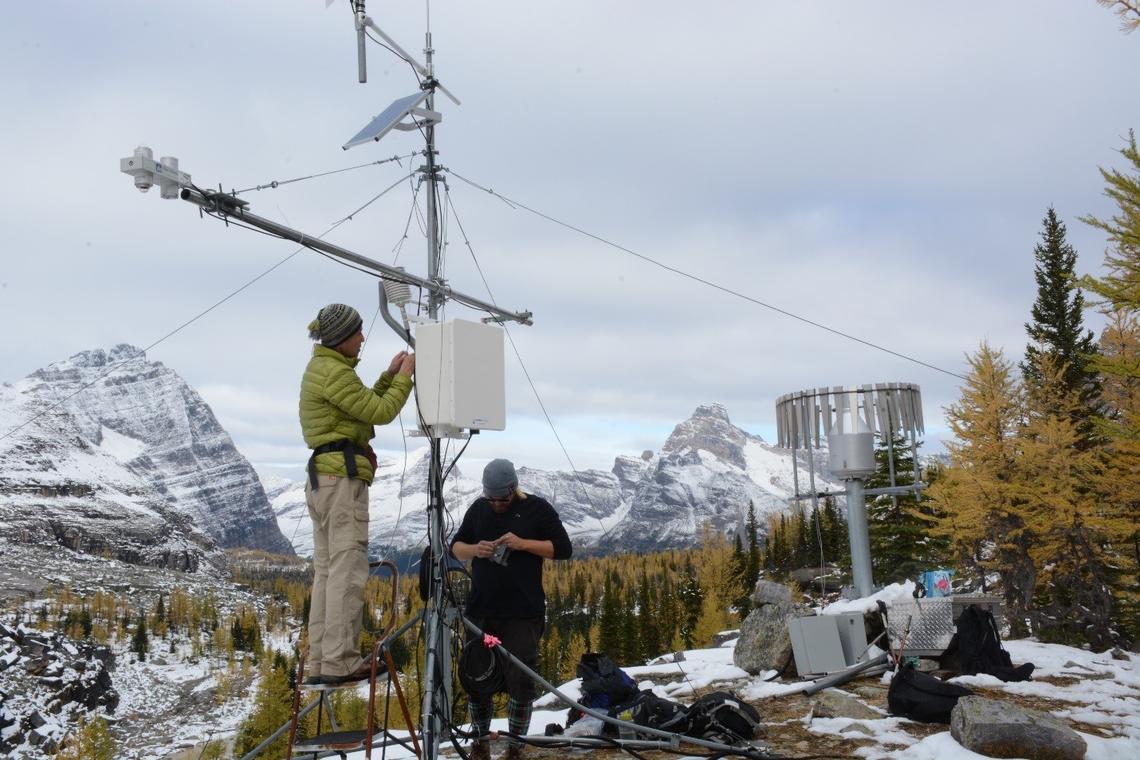

Dr. Hayashi’s main research interests are in the connection among groundwater, surface water, and atmospheric moisture in various environments ranging from the prairies to the mountains. Dr. Masaki leads two long term projects in the Canadian Rockies: at Lake O’Hara and at the thermal springs at Sulphur Mountain. At Lake O’Hara, their research goal is to understand hydrological processes in the alpine headwaters of the Rocky Mountains and to strengthen our ability to predict the effects of climate warming on rivers, lakes, and the aquatic ecosystems in mountain environments. In addition to the Lake O’Hara project, Dr. Hayashi started another alpine hydrological study at the Fortress Ski Area in Kananaskis to understand the effects of different geological conditions on groundwater storage and release mechanism in the mountains. At Sulphur Mountain, the project’s research goals include: 1) establish a monitoring program of all major spring in the Sulphur Mountain area in Banff National Park; 2) develop a quantitative model of groundwater flow using the flow data along with temperature and chemistry; and 3) evaluate the effects of climate change on spring flow rates. Long-term, systematic monitoring of discharge is essential for understanding the groundwater flow system and its response to climatic fluctuations.
Shawn Marshall, PhD
Dr. Shawn Marshall is a glaciologist and climatologist who studies glacier dynamics, cryosphere-climate processes, paleoclimatology, and mountain meteorology. Current research projects include field and modeling studies in the Canadian Rockies, the Canadian Arctic, and Greenland. He is a Fellow of the Royal Canadian Geographical Society and has served on the Council of the International Glaciological Society and as a Chair of the American Geophysical Sciences group.
Yvonne Martin, PhD
Dr. Martin’s research program focuses on drainage basin geomorphology and its interactions with ecology and hydrology, utilizing both field and modeling approaches. To date, she has focused her research at the BGI on post-wildfire geomorphic response and the interactions between tree population dynamics and geomorphological processes. Other projects include bioturbation impacts on soil production, soil mixing and sediment transport.
Richard Petrone, PhD
Professor
Geography and Environmental Management
University of Waterloo
Email: rpetrone@uwaterloo.ca
Dr. Richard Petrone (Professor, University of Waterloo) is a wetland and forest hydrologist and an expert in soil-plant interactions with hydrometeorological conditions. Dr. Petrone has more than 15 years of experience in wetland and forest ecohydrology and biogeochemistry in cold regions, most of which focused in Alberta. He has 5 research sites in the Kananaskis valley, where he and his students are working to improve our understanding of hydrological processes in mountain basins, focusing on forests and wetlands, and their interactions, with a special emphasis evapotranspiration (ET) and water use efficiency by forest and wetland ecosystems. He and his Hydrometeorology Research Group are especially interested in the effect of disturbance (e.g. forestry, fire, linear disturbances) under a changing climate on these processes.
John W. Pomeroy, PhD
Distinguished Professor
Canada Research Chair in Water Resources and Climate Change
Director, Centre for Hydrology and Global Water Futures
Department of Geography and Planning
University of Saskatchewan
Email: john.pomeroy@usask.ca
Dr. Pomeroy’s current research interests are in physical hydrology emphasizing cold regions processes, watershed modeling, snow, forests, mountains, prairies, hydrometeorology, hydrochemistry, ecohydrology, and instrumentation. Dr. Pomeroy is part of the primary research team for a major project in the Canadian Rocky Mountains that aims to: 1) advance the development and integration of information on how hydrological and cryospheric processes interact to form streamflow, and 2) develop and run hydrological models to produce water resource predictions for past and future climates. The project has many key initiatives including the operation of 35 stations in Kananaskis Country: 22 meteorological, 5 groundwater and 8 hydrometric.
Rebecca C. Rooney, PhD
Dr. Rooney is keenly interested in biodiversity and functioning of mountain peatlands in the upper Bow River Basin. These sensitive ecosystems are assumed to provide valuable ecological services, but not only have these not been previously quantified, the wetlands are not even mapped and included in the Alberta Wetland Inventory. Dr. Rooney enjoys working in this majestic and under studied landscape, guided by the enthusiasm and curiosity of the local watershed stewardship groups
Julie M. Thériault, PhD
Professor
Department of Earth and Atmospheric Sciences
Université du Québec à Montréal
Email: theriault.julie@uqam.ca
Storms and their associated precipitation at the top of the Canadian Rocky Mountains are some of the key water–related issues in North America providing water for the public, but can also lead to devastating flooding. SPADE is a collaborative project that investigates the small-scale processes leading to orographic precipitation passing over the continental divide, with Dr Thériault as a principal investigator. Specifically, there are three science questions and are as follows. First, how much condensate is passing over the continental divide and falling to the surface on the upwind and downwind slopes? Secondly, what are the factors governing this condensate and the surface distribution of precipitation? Lastly, how well are these features of the precipitation simulated? To answer these questions, intensive meteorological data will be collected, using both automatic observations and manual observations, along with numerical simulations using the Global Environmental Multiscale atmospheric model and a computational fluid dynamics model. This experiment will run from May to June 2019 and is funded by Global Water Futures: Solutions to Water Threats in an Era of Global Change.
Cherie Westbrook, PhD
Professor and Director, NSERC CREATE for Water Security
Centre for Hydrology, Global Institute for Water Security Department of Geography and Planning
University of Saskatchewan
Email: cherie.westbrook@usask.ca
Dr. Cherie Westbrook is the lead researcher of the Wetland Ecohydrology Research Group. The goal of this group is to use principles from hydrology and ecology to improve our fundamental understanding of wetland and riparian ecosystems. We focus on studying the interactive pathways between surface and ground waters, how beavers and humans influence these pathways, and as a result, how water and nutrients are transported from wetlands and riparian areas. Our group uses tools from ecology and hydrology to improve our understanding of mountain wetland systems. In particular, we are focused on examining how beaver activities affect peatland form, ecohydrologic function, and the subsequent export of water and nutrients from these systems. For example, we are studying how increases in open water formation, owing to beaver damming, affects surface water exchange with the alluvial aquifers that underlie the peat. Also, we are trying to determine how important of a role beaver play in maintaining hydrologic conditions suitable for persistent peat formation. Further, we are using sophisticated instruments to “see” beneath the peat surface to figure out how beaver activities over the past 12,000 years have shaped peatland form.
Vegetation Dynamics and Forestry
David Greene, PhD
Professor and Chair, Forest Ecology
Forestry & Wildland Rseources
Humboldt State University
Email: dfg67@humboldt.edu
The tendency for dramatic temporal variation in annual reproductive effort ("masting") in most higher latitude, non-serotinous tree species is being examined in a unique cross-continental survey of Picea glauca and the very close-related Picea engelmannii. In particular this project, with now 13 consecutive years of data, will relate cone production in year t to both summer weather in year t-1 as well as the size of the standing cone crop in year t-1 (when the the reproductive buds for the crop in year t were initiated). This simple model (warmer temperatures and a small crop in t-1 lead to a large crop in t) presently explains about 60% of the variation in inter-annual production. Barrier Lake is one of the sites in the survey. In addition, we are also testing the model using an elevational transect both at Kananaskis (Morley to Highwood Pass) and in Colorado.
Anna Hargreaves, PhD
Dr. Hargreaves’s research focuses on interactions among species (biotic interactions) and the dynamics of species range limits. Much of the research is field-based; she conduct’s large- and small-scale experiments in natural environments to test and refine theoretical ideas in ecology and evolution that have practical conservation relevance. Dr. Hargreaves is especially interested in adaptation in range-edge populations, and the role biotic interactions play in shaping species’ geographic distributions.
Edward Johnson, PhD
Dr. Johnson's research is directed at integrating natural disturbance into plant community organization and dynamics. His applied interests are in global climate change, biological conservation, and ecosystem and fire management. He is a member of the NSF Community Surface Dynamics Modeling System, NSERC GEOIDE, PAGSE (Royal Society of Canada), and Editor-in-Chief of the journal “Bulletin of the Ecological Society of America.”
Akira Mori, PhD
Associate Professor
Graduate School of Environment and Information Sciences
Yokohama National University
Email: akkym@ynu.ac.jp
I have been working on disturbance ecology. Disturbance is ubiquitous in terrestrial ecosystems, and drives fundamental processes as long as it is at natural levels. Anthropocentric disturbance is increasingly becoming prominent in the present era of Anthropocene. Natural disturbance regime is also changing due to climate change. It is thus important, from both basic and applied perspectives, to understand the causes and consequences of disturbance. More focuses are now given to management approaches founded on natural processes. That is, paying special attention to natural disturbance as a key process in natural systems is fundamental. Such management approach, so-called ecosystem-based management, aims to conserve biological diversity while meeting the social, economic, political and cultural needs of current and future generations. Based upon the above considerations, I have been working on issues in forest and tundra ecosystems, and have been contributing to several international frameworks such as the IPBES (Intergovernmental Science-Policy Platform on Biodiversity and Ecosystem Services) reports. I am currently an Associate Editor for Journal of Applied Ecology (UK) and Environmental Management (USA).
Cindy Prescott, PhD
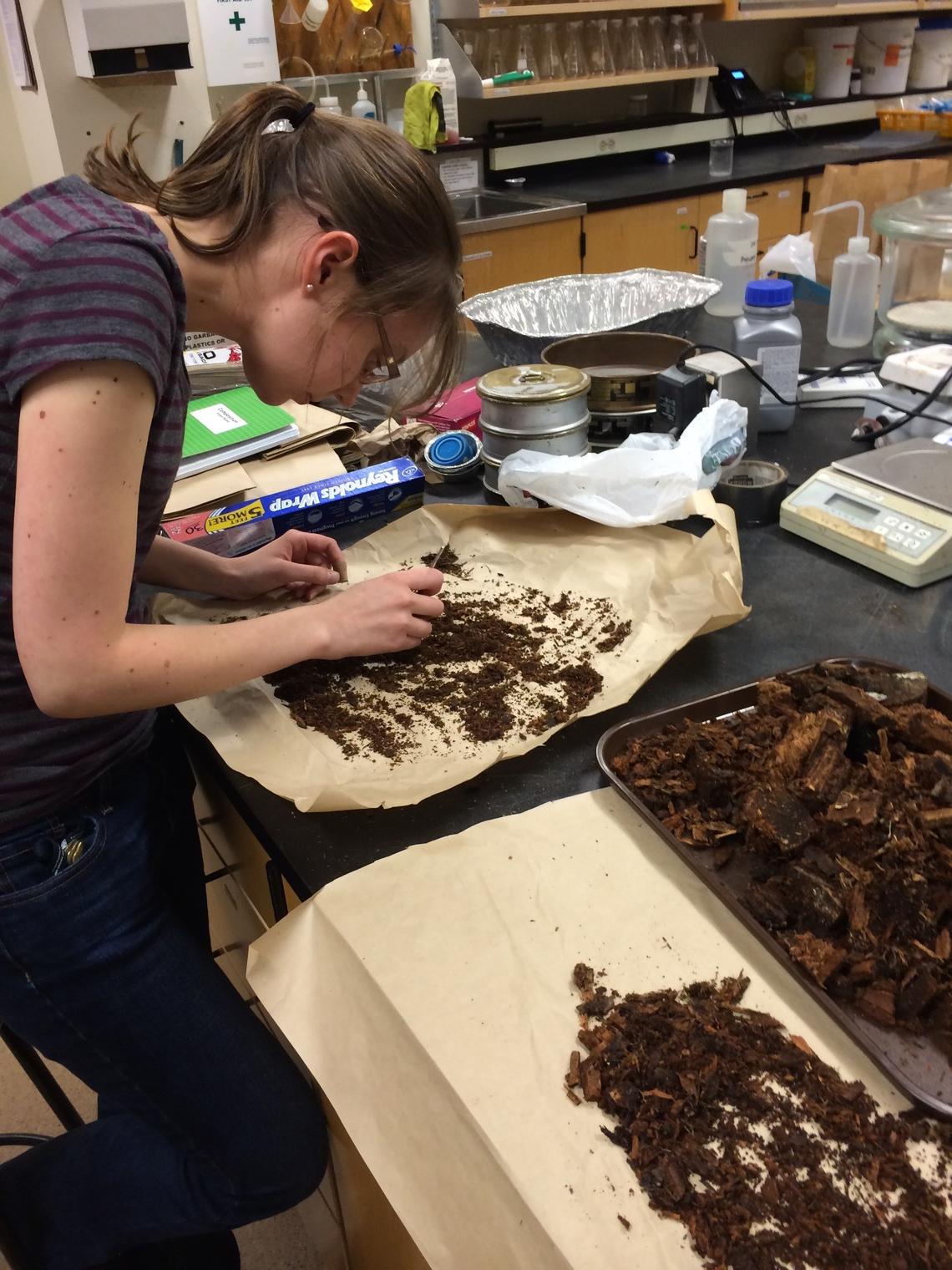
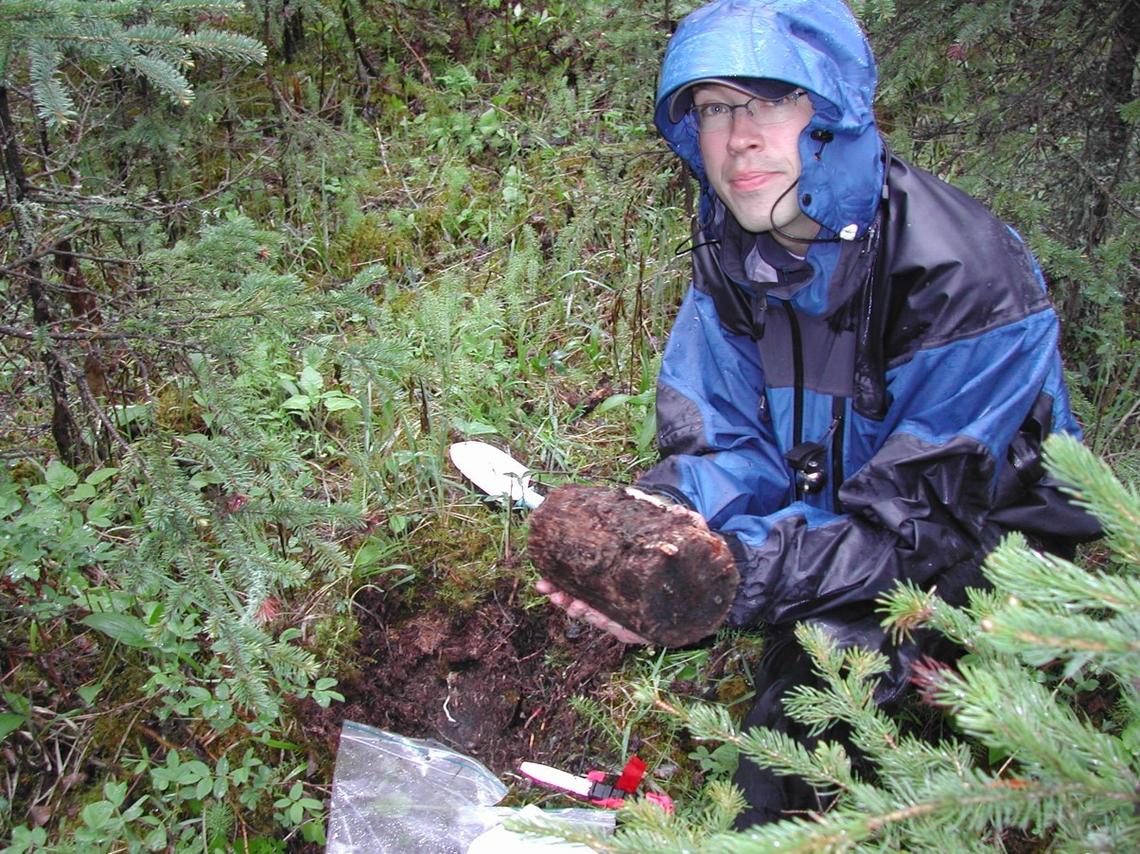
Dr. Prescott’s areas of research include rates of litter decomposition, controlling factors and influences of forestry practices, influence of site and species on N availability and long term effects of forest fertilization, among others. In 1984, Dr. Prescott established 3 research sites in the Lusk Creek Basin, adjacent to the Barrier Lake Field Station, as part of her PhD. Log segments of pine, spruce and fir were placed at the three research sites. The log segments were measured at 2, 6, 10, 14, 21 and 30 years to determine mass remaining and changes in nutrient concentration. The decomposing logs were a sink for the limiting nutrients nitrogen and phosphorus until more than 80% of their original weight had been lost, at which point they became a net source of these nutrients.
Jana Vamosi, PhD
Dr. Jana Vamosi's research aims to pinpoint hotspots of threatened species in Canada and determine how climate change accelerates extinction risk. Her research program emerged from broad interests in the macroevolution and community ecology of plants and often brings phylogenetic approaches to questions pertaining to the study of plant-insect interactions and the conservation of ecosystem function. Her team is gathering more precise information on the phylogenetic distribution of flowering plants at risk of extinction in Canada.
Ecosystem Sustainability and Environmental Economics
Marc Macias-Fauria, PhD
Associate Professor in Physical Geography
School of Geography & the Environment
University of Oxford
Dr. Marc Macias-Fauria’s research is directed at understanding the interactions between physical and biological systems over spatial scales ranging from study sites to continents and temporal scales ranging from decades to millennia. Ecological processes are coupled with physical mechanisms such as atmospheric dynamics and/or geomorphology, among others (i.e. ecology is largely controlled or constrained by the physical environment).
Mary Reid, PhD
Professor
Department of Biological Sciences and Environmental Science Program
University of Calgary
Email: mreid@ucalgary.ca
Dr. Reid’s lab examines the processes and traits that affect the success of bark beetles attacking trees and the success of trees defending against bark beetles. In lodgepole pine, we are investigating relationships between tree size, growth rate, defences and phloem nutrients to better understand host choice by bark beetles.
Rolf Vinebrook, PhD
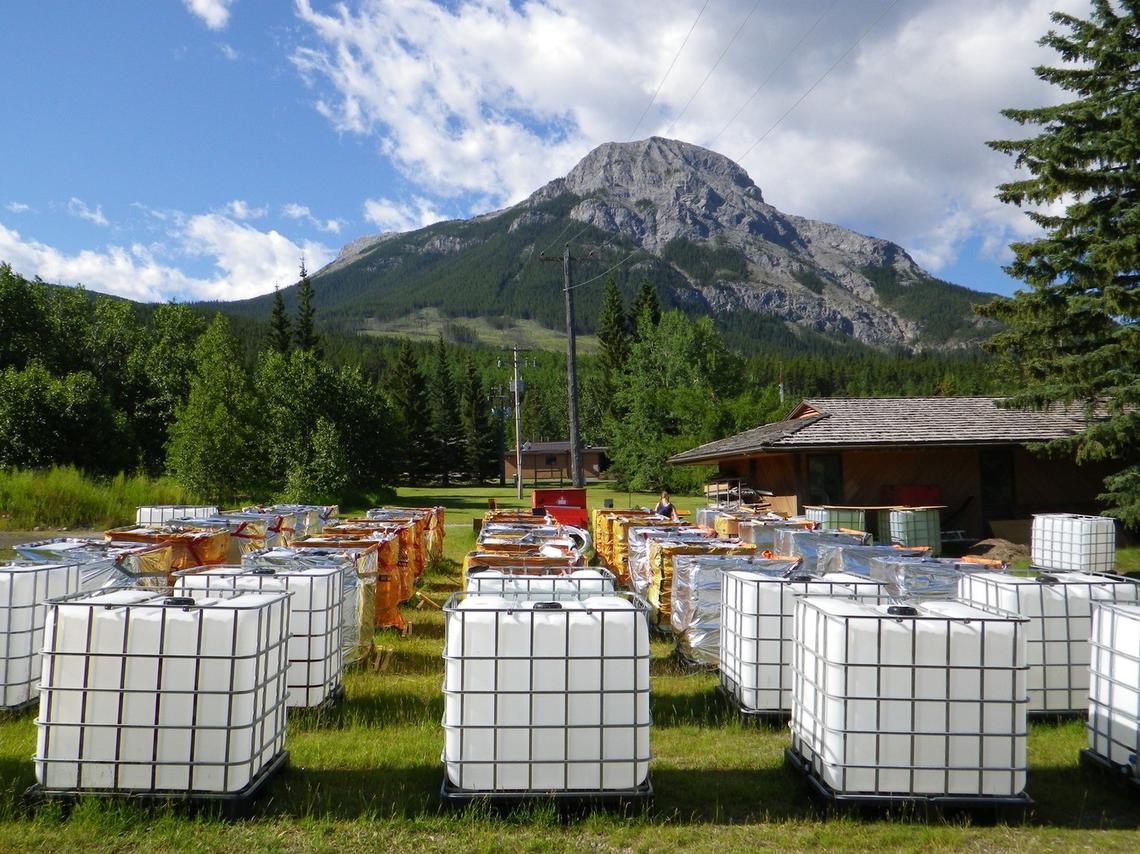
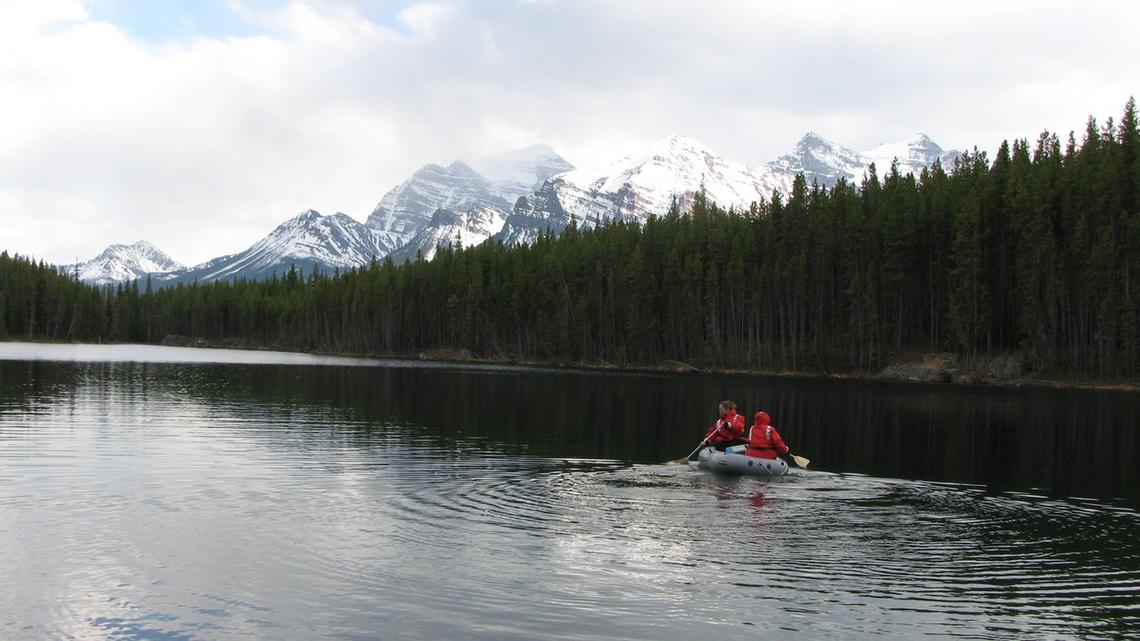
The main goal of Dr. Vinebrooke’s research group at the field station is to explore past, current, and future population- and community-level responses to climatic variation and other environmental drivers along an elevational gradient of lakes and ponds in the Canadian Rockies. They combine aquatic surveys with mesocosm experiments and paleolimnology to determine the key environmental factors of species composition and related ecological processes, such as primary production and grazing pressure. They are particularly excited by their ongoing reciprocal transplant experiment involving alpine and montane-valley pond ecosystems maintained in 1000-liter capacity mesocosms at both the field station and also above treeline near Sunshine Village, Banff National Park. Here, they are currently testing the hypothesis that alpine communities are less resilient than lower montane communities to increasingly extreme climatic events that are the consequences of global warming. Future research will investigate the cumulative impacts of altered temperature regimes and drought on these alpine versus montane pond ecosystems.
Human, Domestic Animal, and Wildlife Disease Interactions
Kathreen Ruckstuhl, PhD
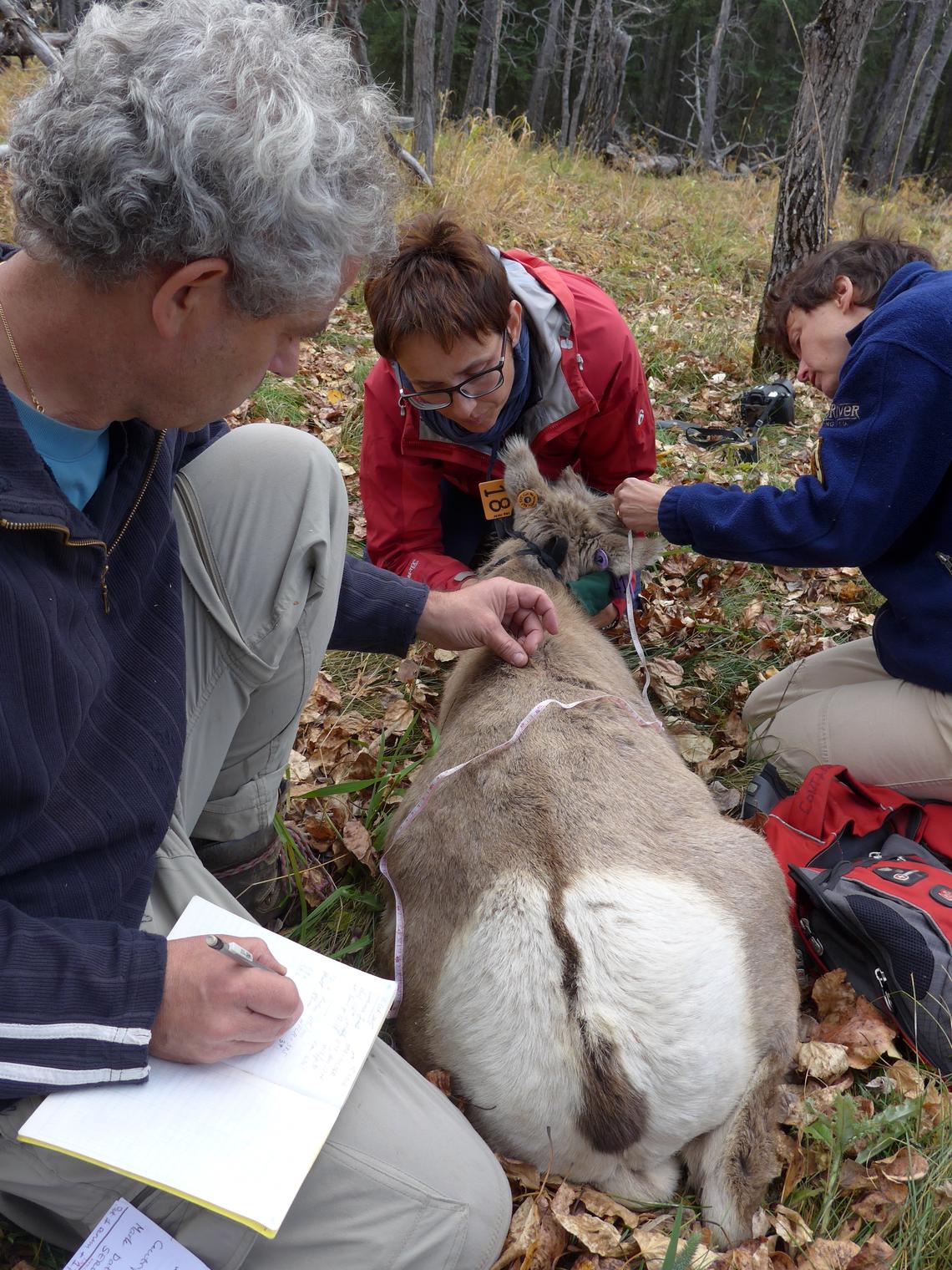
Dr. Ruckstuhl’s research group focuses on the behaviour and ecology of a variety of mammals. Among these, ungulates (hoofed mammals), particularly Rocky Mountain bighorn sheep, have been the focus of her research program the past 25 years. She also works on various other ungulates through collaborations within Canada, and across Eurasia. Research topics include how parasites and disease are transmitted between individuals within social groups, the evolution of sociality and sexual segregation, and how bighorn sheep and deer species use social cues and information to avoid predation. She works across the Province of Alberta, in close collaboration with Alberta Fish & Wildlife, AEP, UCVM and others. All her studies focus of the behavioural ecology of a species, to find proximate and ultimate causes of their behaviours, the potential trade-offs they face and how to protect them.
(New) Space Physics
Christopher Cully, PhD
Associate Professor, Tier II NSERC CRC Space Plasma
Department of Physics and Astronomy
University of Calgary
Email: cmcully@ucalgary.ca

Dr. Cully is the principal investigator for ABOVE (the Array for Broadband Observations of VLF/ELF Emissions). Dr. Cully’s research focuses on space physics, wave-particle interactions, ion outflow, kinetic plasma theory, spacecraft-plasma interactions, and Van Allen radiation belts, among others. The Van Allen radiation belts, a major focus of Dr. Cully’s research, are regions of near-Earth space filled with energetic particles. Particles from these doughnut-shaped belts episodically precipitate into Earth’s atmosphere in an oval-shaped region that covers much of Canada. To better understand the physical processes driving this precipitation, Dr. Cully and his team are deploying an array of sensitive radio receivers across Western Canada. Their first instrument was installed at the Barrier Lake field station in summer 2013 and has been active since.
